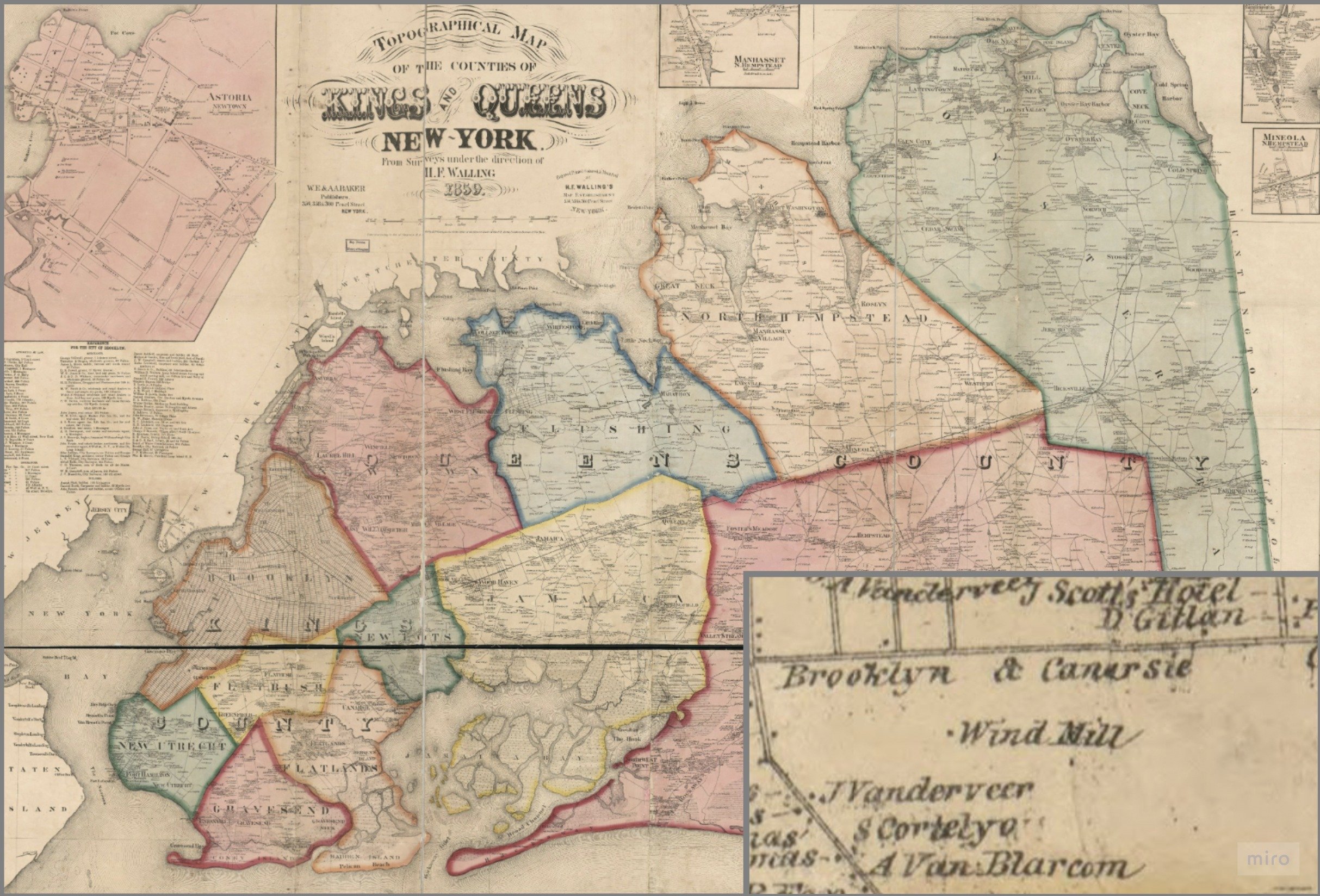Vanderveer's Mill: Lost Landmark
A photo of Vanderveer’s Mill as it looked at the time of the Draft Riots (circa 1872-1887), when it was being used as a grain silo. (Photo: George Bradford Brainerd via The Brooklyn Museum)
The first mill ever constructed on Long Island was in Flatbush, and it played an important role in Black history.
Built by artisans enslaved by the Vanderveer family and completed in 1805 at the current intersection of Clarendon Rd & Rogers Ave, it was crafted from oak trees that had grown on the property, shingled with cypress, and had a stone base. The huge edifice was 4 stories high — tall enough back then to see all the way to the ocean — and it had giant, 26-foot long sails that caught the wind and ground grain for farmers who came from all over the island, 24 hours a day during the busy season. Locally, black people enslaved by Dutch farmers would bring the grain they harvested in Flatbush and combine the resulting flour with lard to make large, light loaves of bread that fed the entire village.
By 1863, when the draft riots broke out in New York, the sails of Vanderveer’s Mill had been gone for two decades (blown off in a storm — twice) and it was being used to house hay, corn stalks, and couple of white owls. With Black people being lynched by the Irish all over the city, the Black residents of Flatbush, now servants, ran panicked from their homes and took refuge inside. In his book Tales of Old Flatbush, John Snyder relays a moment of racial unity in Flatbush history. Since the Black families fled too quickly to take anything with them, the White families gathered supplies and “started across the open fields” to bring them. The guard, known as Cats, fearing they had come to harm them, “barricaded the door and refused to open it.” Thankfully, he was “assured that friends had arrived” and the goods were delivered.
On March 4, 1879, Vanderveer’s Mill caught fire, said to be the work of thieves or “tramps.” The fire brigade arrived too late, and Vanderveer’s Mill burned to the ground, bringing sad spectators who had survived inside as well as gawkers who had seen the flames from miles away. It was reported that you could see the flames from Manhattan, and that, “The strong oak timbers stood up until the very last, while the shingles which covered it fell away, sending up showers of sparks, which, against the sky, looked like gold-dust sprinkled on a cloth of blue…after a couple of hours had passed, that which it had taken years to build, and which had stood time's ravages for three quarters of a century, was laid in ruins.”
An illustration of some cows in front of the Vanderveer windmill back when it still milled stuff. (Photo: Columbia University Library.)
An illustration of Vanderveer’s Mill in winter, from the book Tales of Old Flatbush by John Snyder.
This 1859 map covers all of Kings and Queens counties, but Vanderveer’s Mill was so important that it’s denoted here alongside Flatbush landowners.
Brooklyn Daily Eagle article about the destruction of the Vanderveer Mill from March 5, 1879.








A magical skatepond on the Lefferts Farm, the Steenbakkery was a pivotal part of village social life for more than 100 years, especially during the Revolutionary and Civil Wars.